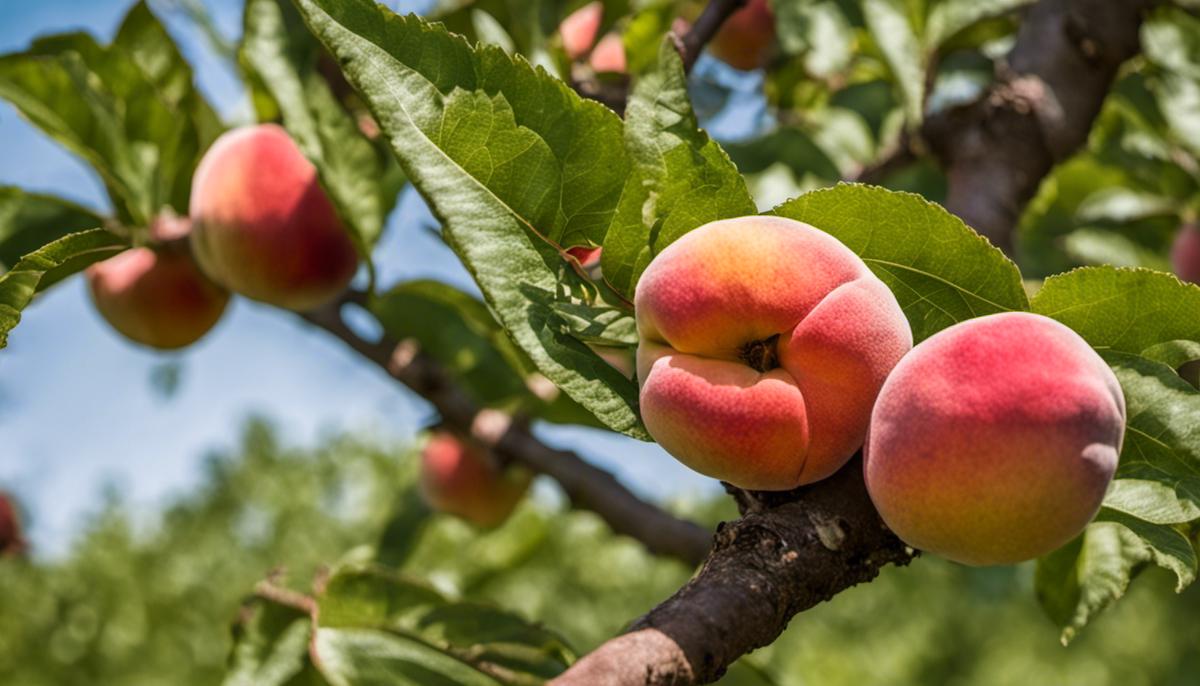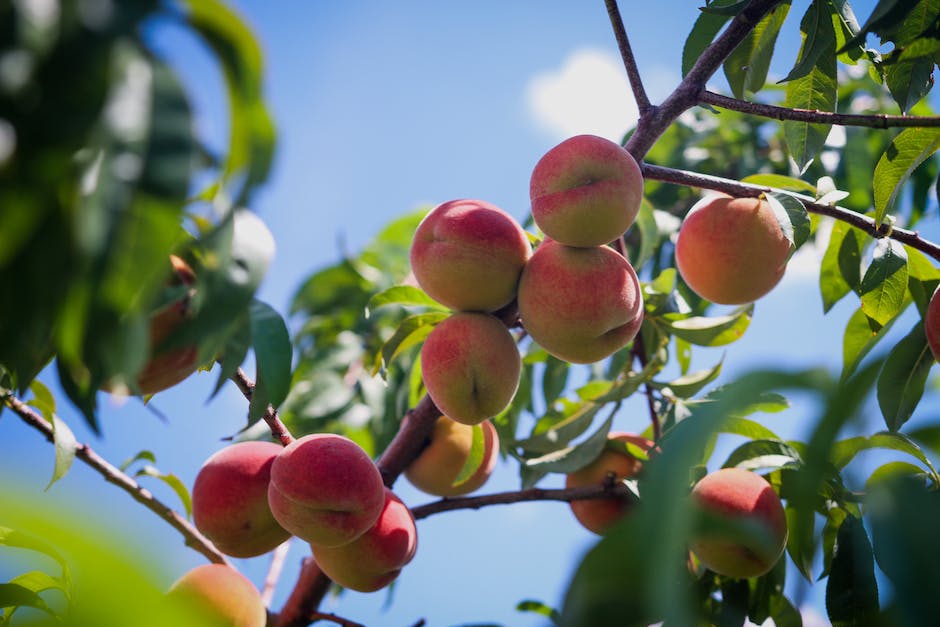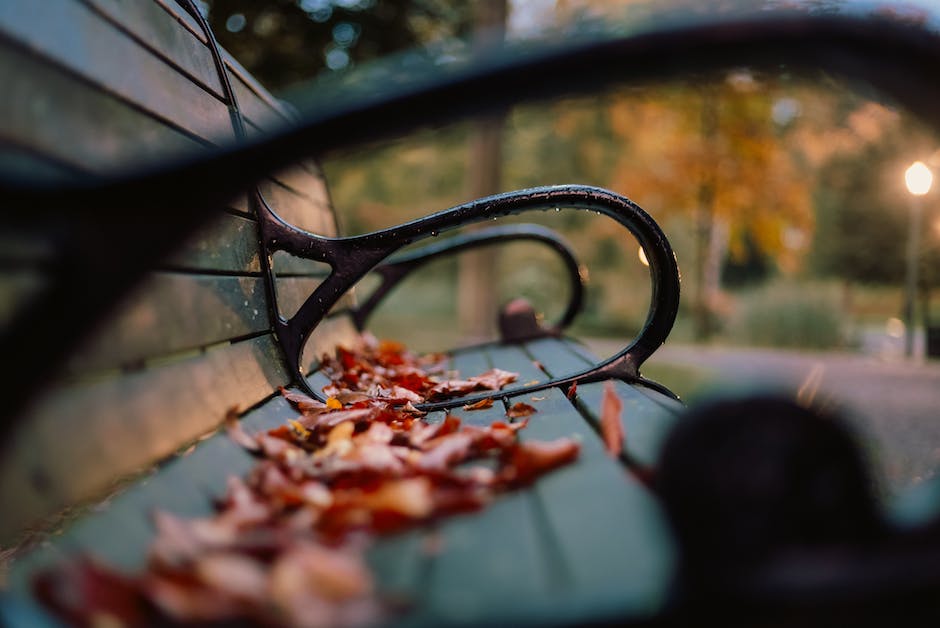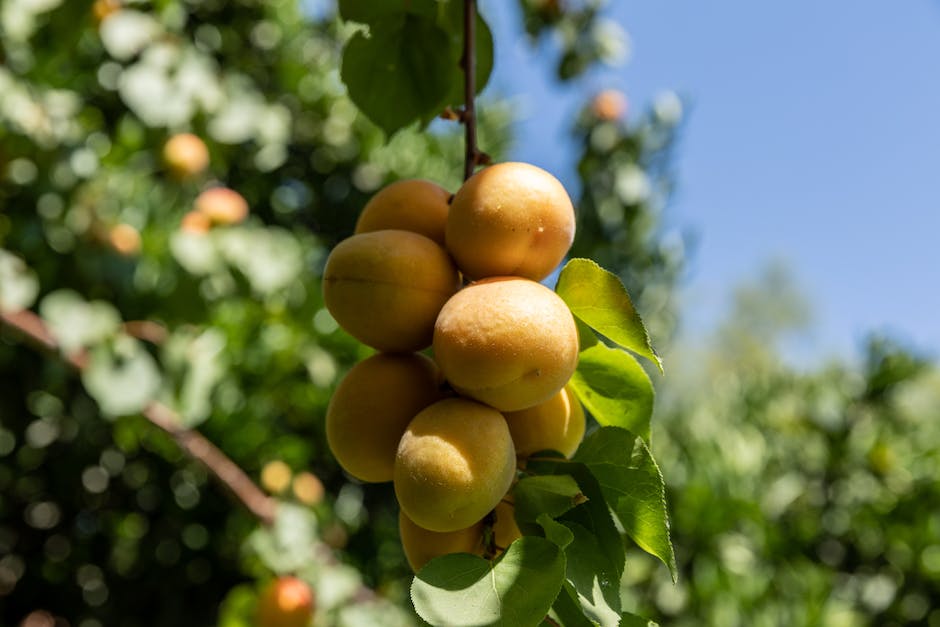Curing Peach Tree Leaf Curl: A Guide

Leaf curl disease is a common foe of peach trees, often causing significant discomfort and potential harm to these beautiful fruit-bearing plants. The disease manifests itself through a host of signs, most notable being a red discoloration and a curling of the leaves. Early detection plays a crucial part in the effective treatment of this condition, hence the much-needed focus on understanding its symptoms. Besides providing you with insights into the early signs of leaf curl disease, we will delve into the various treatment options available to curb this problem. These treatments range from natural, organic home remedies to potent commercial fungicides. Furthermore, it’s not just about treating the disease; prevention is always better than cure. Therefore, we will also explore the preventive measures, such as sanitation, neat pruning practices, and timely preventive sprays, to fend off the recurrence of this menacing disease.
Identifying Leaf Curl Disease
Peach Tree Lover’s Guide: Confirming Leaf Curl Disease
Hello to all peach tree enthusiasts out there! There’s an undeniable pleasure in witnessing the delicate pink blossoms of a peach tree bursting forth in spring, foreshadowing the succulent, juicy peaches to come. But occasionally, this joy might be dampened by a common affliction – peach leaf curl disease. Recognizing the signs promptly can save your beloved tree from severe damage. So, let’s dive into the exact steps to confirm if your peach tree is suffering from leaf curl disease.
At the crux of the entire process is understanding what leaf curl disease looks like. It’s characterized by a distinctive set of symptoms that affect the leaves of the peach tree. The leaves generally display a red discoloration, coupled with a blister-like appearance and a puckered, ‘curled’ contour. Since early detection is key to combating this disease, regular examination of your peach tree, especially as new leaves emerge, is highly recommended.
To make an accurate assessment, here’s what you’ll need: a magnifying glass, a notepad, and a pen. Armed with these, approach your peach tree and observe the leaves meticulously.
Start by noting the color of the leaves. Healthy peach tree leaves possess a vibrant green hue. In contrast, leaves displaying signs of leaf curl disease often show a pinkish-red coloration. This is particularly evident on the top side of the leaf. If red blots adorn your leaves, it’s a potential evidence of leaf curl disease.
Next, look at the shape and texture of the leaves. Healthy leaves are smooth and flat. Leaf curl, however, forces leaves into a contorted, curling shape. You may even notice that affected leaves become thick and have a bubbly, blister-like surface. All these are tell-tale signs of a possible leaf curl infection.
To be more certain, utilize the magnifying glass. Up close, leaf curl disease can present itself with white or gray powdery patches. These are spores of the fungus responsible for the disease. If your analysis reveals these powdery patches, it’s another likely confirmation of leaf curl disease.
Having noted all the pertinent signs and symptoms on your notepad, compare them with pictures of leaf curl disease online or in a gardening book. This comparison will help reaffirm your findings. Don’t panic if these signs match; it simply means that proactive steps need to be taken.
Last but not least, it’s always worth remembering that confirming peach leaf curl disease is just the first step. If your suspicions are accurate, proceed to explore eco-friendly disease control methods, such as fungicidal treatments or resistant variety experimentation. Embrace this challenge as an extension of your knowledge and commitment to your hobby. Every aspiring peach tree whisperer learns to overcome such obstacles, turning them into opportunities to nurture their precious tree further!
So, dear peach lovers, remember to look deeply, diagnose smartly, and act swiftly. The love and attention you show your tree today will reward you with bountiful, disease-free peaches tomorrow. Happy peach growing!

Effective Treatment Options
How to Treat Peach Leaf Curl Disease: A Game-Changer for Peach Tree Enthusiasts
So, you’ve spotted the tell-tale signs of Peach Leaf Curl disease in your tree. You’ve observed the symptomatic discolorations, checked out those puckered leaves, and perhaps even discovered the presence of those pesky fungus spores under a magnifying glass. But that’s only hurdle one. Difference between a dying tree and a flourish could be in your hands, and treating this little misfortune can turn into a rewarding part of your peach tree caretaking voyage. When you know how to handle Peach Leaf Curl, you’re well on your way to becoming a true peach tree maestro.
Post-Diagnosis Management of Leaf Curl Disease
Once diagnosed, the first instinct might be panic. We would say – don’t! Here comes the part where you pivot from observer to active warrior against the tree plague. Start by pruning off the infected leaves. Although it might seem counterproductive to remove pieces of your beloved tree, trust us, this is best for its overall health. Pruning allows the tree to direct its energy efficiently – it can now focus on growing new, disease-free foliage instead of trying to salvage the spoiled leaves.
Clear away any fallen leaves from the ground beneath the tree as well. Remember, these could potentially harbor more spores ready to spawn havoc at the next opportunity.
Invest in Fungicide Treatment
While pruning is an effective first step, you also need a reliable line of defense against the disease’s comeback – for this, we recommend a good quality fungicide. Apply it to the entire tree, from tip to trunk, making sure to cover all surfaces thoroughly. Timing is crucial in this battle – aim to spritz that tree during late winter or early spring, just before the buds start to open.
Some peach tree lovers swear by the Bordeaux mixture – a concoction of copper sulfate and calcium hydroxide, both eco-friendly chemicals. This blue mist is an efficient, trusted warrior against Peach Leaf Curl.
Prevention is Better Than Cure
The story of Peach Leaf Curl offers us important lessons in preventive maintenance. Being vigilant can help detect the earliest signs of disease, enabling prompt action that can save many, if not all, of your beautiful peachy leaves.
If you’re planning on expanding your peach tree collection, consider purchasing Peach Leaf Curl resistant varieties like Frost, Indian Free, and Q-1-8. Remember that applying timely fungicide treatments, even to seemingly healthy trees, can keep the leaf curl at bay.
Our shared love for these sweet trees, coupled with the collective wisdom of experienced enthusiasts like yourself, leads to an empowering realization. Together, we can not only combat sudden misfortunes such as the Peach Leaf Curl but also continue to enjoy the expansive, delicious rewards of peach-growing.

Preventive Measures for Leaf Curl
Preventing the Recurrence of Peach Leaf Curl Disease: The Grace of Proactive Rejuvenation
Imagine a beautiful summer morning with hailstones of luscious, plump peaches, ripe, and awaiting their grand harvest. Isn’t this a sight every peach tree keeper would love to witness? But then, nature, as we know, isn’t always gentle. It has its own way of throwing curveballs! Peach Leaf Curl is one such curveball; a common disease that can wreak havoc. Let’s march on and see how this battle can be tipped in our favor.
Now that we’re looking ahead post-diagnosis, let’s understand the necessary steps for prevention. Pruning is paramount! Why? It’s simple! By pruning, we’re making the tree less inviting to the disease-causing fungus. So, pull out those pruning shears and bid adieu to those distorted, infected leaves and stems.
Fallen leaves often act as disease-carriers. Therefore, gathering and disposing of fallen leaves not just preempts potential infection but contributes to a healthier soil profile. With the infected leaves removed, it’s time to bring in our ally, the fungicide treatment.
Fungicide application is a method that demands attention because its effectiveness lies in the timing. Early winter or late fall, just after leaf drop, is the most effective time for a fungicide treatment. A second treatment in early spring, during bud swelling, can be a prudent step towards preventing Peach Leaf Curl disease’s recurrence.
An enchanting option for the fungicide treatment is Bordeaux mixture. This concoction of copper sulfate and lime has been a popular choice among peach tree mavericks for fighting fungal diseases for years. Its good coverage and persistence make it an exceptional alternative for prevention.
Remember, prevention is always better than cure. Regular maintenance of your beloved peach tree, coupled with vigilant observation, can prevent an unexpected flare-up of the disease. After the whirlwind of the initial disease management, it’s important to not let down the guard.
Considering Peach Leaf Curl, there is an array of peach tree varieties that are resistant to the disease. Varieties such as ‘Avalon Pride,’ ‘Charlotte,’ and ‘Crimson Cascade’ are sterling examples of such resistance. Incorporating these kinds could not only enrich the diversity of your peach orchard but also provide a buffering effect against the disease.
But this journey, mind you, is never solitary. It is further enriched by the collective wisdom shared among the fraternity of peach tree enthusiasts. The more you connect, share, and learn, the better equipped you are in this battle against leaf curl disease.
So, here we are! Armed, ready, and with a preventive strategy in place! Know your tree, love your tree, and shower it with care. For what you sow, so shall you reap! It’s all part of the unfolding drama of life that plays out in the roots, stems, leaves and fruits of your peach tree. Raring to go, haven’t we all become peach tree warriors in our own right now? Onwards we march, towards a disease-free, bountiful peach harvest. Your peach tree awaits!

Leaf curl disease, while potentially devastating to peach trees, is not a death sentence. With an informed understanding of the disease’s symptoms, armed with the knowledge of various treatment options, ranging from organic solutions to commercial fungicides, one can effectively combat this plant ailment. Complementing these treatments with preventive measures like compliance to good sanitation practices, neat pruning, and the application of preventive sprays at correct intervals can further reinforce the health of your peach trees. As a responsible owner of these trees, it becomes your duty to secure their health and longevity, thereby preserving the beauty and prosperity that they bring.



